Years ago, I drilled a hole in the short vertical side of our freshwater tank on the street side.
A special grommet goes into the hole and then a PVC pipe is inserted into the grommet, which seals the grommet to the edges of the drilled hole.
This is the same grommet that is used on the top of each of our gray & black tank to which ABS drain pipes connect.
We put a PVC ball-valve on our new pipe with a female hose thread to connect a city water fill hose. Just putting a female hose connection and closing it off with a plastic hose plug would also work if you don’t fill above gravity opening.
A short garden hose from Camping World connects to the female hose thread fitting. The other end of the short hose has a quick disconnect fitting to which we run through two simple charcoal filters and add approximately 1 oz of unscented laundry bleach for each 50-gallons of freshwater fill. The other end of the water filter has a quick disconnect fitting to which the campground city water hose connects.
When we had lower pressure available or we needed a quick fill because we could not park at the water fill very long, I would easily remove 2nd filter housing, which was fast because of the quick disconnects.
The PVC shutoff is to close off the ‘gravity fill’ so water does not splash out, etc. There is also a removable threaded PVC plug facing out, to which I attach a vinyl hose into which I pour my pre-diluted chlorine.
The real purpose was to be able to add chlorine. And I can add it while filling with city water so the chlorine is further diluted as it is poured it.
We have the original conventional city water fill with a valve under our sink. I drilled the hole in the freshwater tank inserted the grommet and inserted the PVC pipe.
We have a fluorescent lamp on top of the freshwater tank, which we use to light up the tank so we can stop filling it before it overflows and pours water over our bulkhead.
About every 5 days, all year long, we gravity fill, then run from the water pump. Our original hose hookup connection has been plugged for over 10 years. We fill fast, don’t stress plumbing with city water pressure & can easily add one ounce of bleach for about 100 gallons of freshwater, all because we have a gravity fill.
When at extended dry camp sessions, like Lemon Rally, we bring five 5-gallon pails of water and use a spare 12-water pump to pump from pails into gravity filler. An inexpensive drill-pump would also move pail water to the tank.
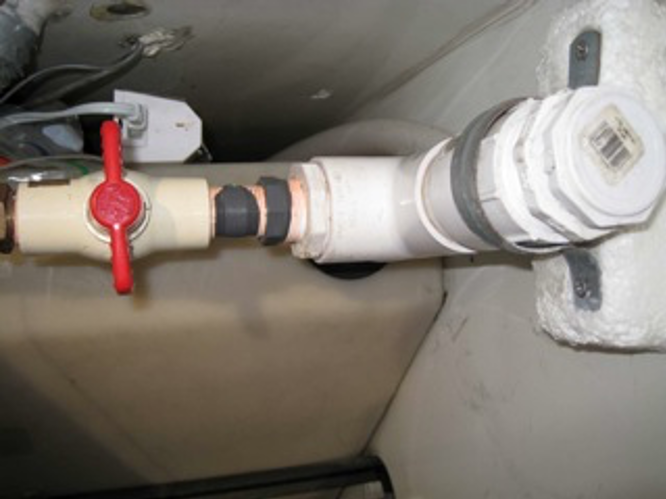
by Barry and Cindy 1997 U270 36′ 12/26/09
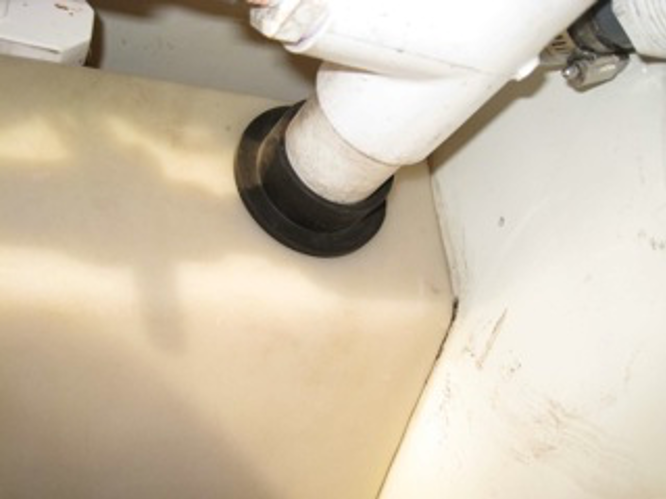
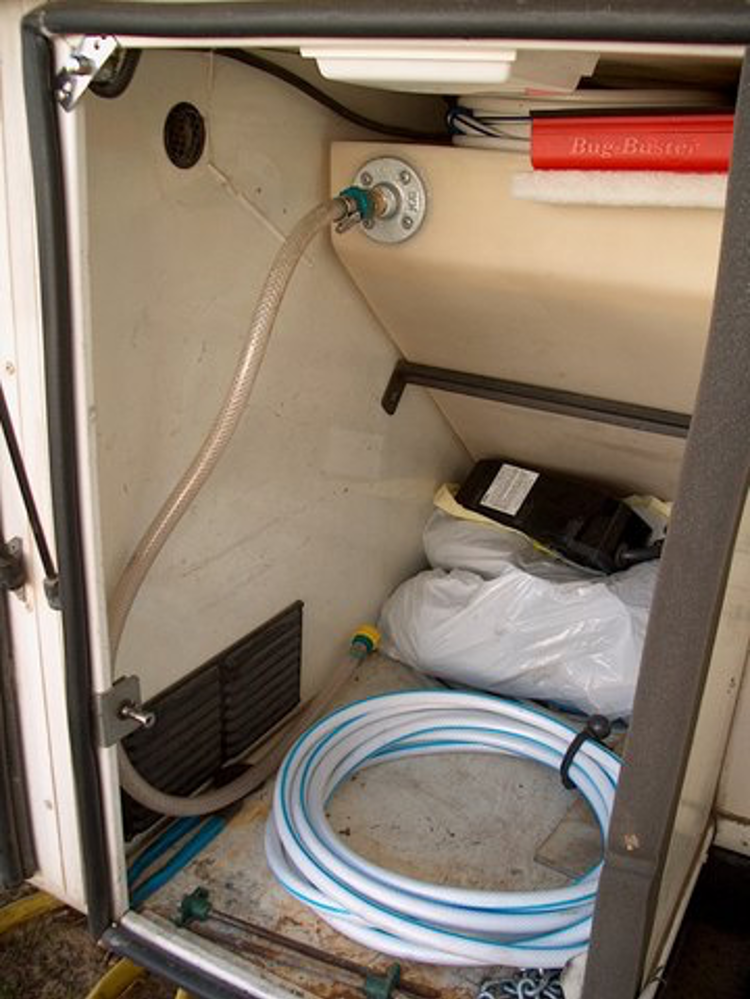
Photos by Jerry – pumper0822
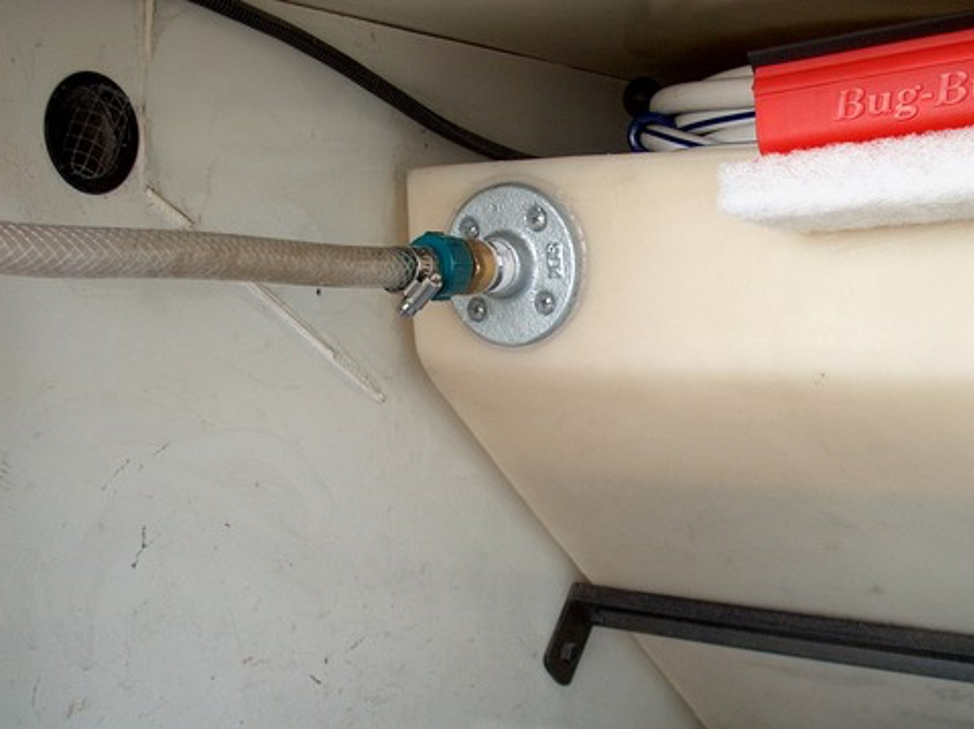
photo by JOR 1995 U300SE
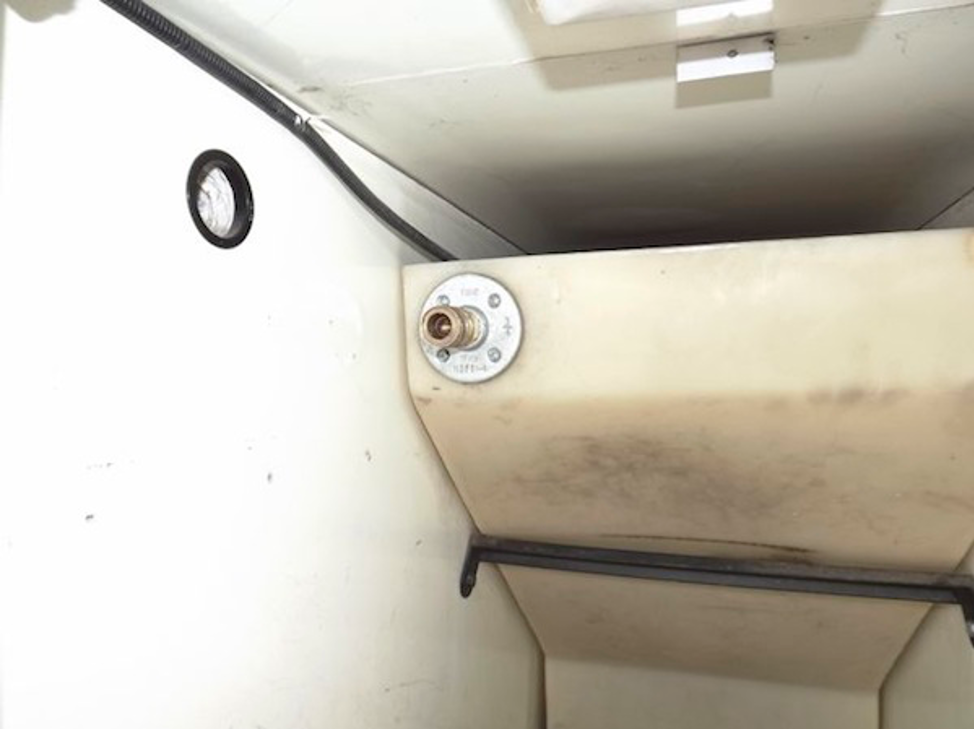
Part #88-1259 – 3″ rubber grommet
Part #88-1258 – 2″ rubber grommet
Part #88-1257 – 1.5″ rubber grommet
Topp’s Pipe-to-Tank Seal Provides a Tight Seal Without Adhesive, Hardware, or Threads Rochester, IN – Topp Industries’ pipe-to-tank seal (grommet) provides a tight, positive mechanical seal without using adhesive, hardware, or threads. The pipe-to-tank seal is ideal for use with PVC, galvanized steel, copper, EMT, rigid conduit, fiberglass, and polyethylene pipe.
Designed to work in applications where pipe penetrations are required and on pipes that have an outside diameter of SCH 40, the tapered inner diameter forces the outer diameter to expand and securely seal the penetrating pipe/tubing. The grommet seals both flat and curved material up to angles as great as 15°.
The pipe-to-tank sealing grommet can be used in such applications as wastewater tanks, sump risers, pumping stations, dispenser pans, valve boxes, junction boxes, cooling systems, and boats, among many others. Manufactured from a tough, pliable thermoplastic and resists most chemical compounds, petroleum products, methanol, ethanol, and most soil conditions.
For more information contact Topp Industries, Inc. PO Box 420, Rochester, IN 46975, Telephone 800-354-4534 or 574-233-3681. FAX 574-223-6106. Web Site: www.toppindustries.com.
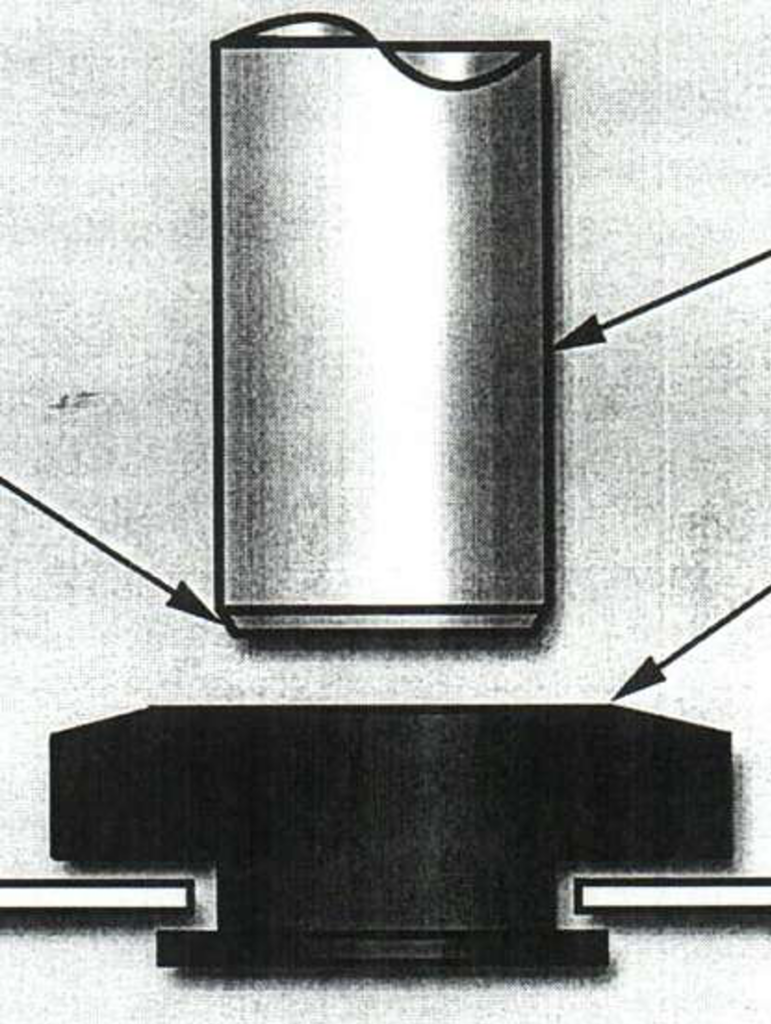
Filling the tank:
I can easily reach the flexible vent pipe on top of my water tank, so I’ve permanently removed the clamp which secures the vent pipe to the tank and when I need to fill I sanitize the end of a white water hose, pop off the vent pipe, insert the tip of the water hose into the top of the tank, and turn the water on full force. This fills the tank quickly, and then I just slip the vent pipe back onto the tank. It always works and I’ve never had a problem with it.
Sanitizing water in Mexico:
I add 1 teaspoon bleach per 10 gallons of water to the tank when I fill it, then run it through a household filter to remove the chlorine for bathing, etc. The bleach has killed all living organisms and is safe for use. Just for insurance, all water for consumption goes through the Everpure filter at the sink.
In the states, I keep just enough water in the tank for use on the road – maybe 15 gallons – and don’t sanitize it. Bobby Johnson U280